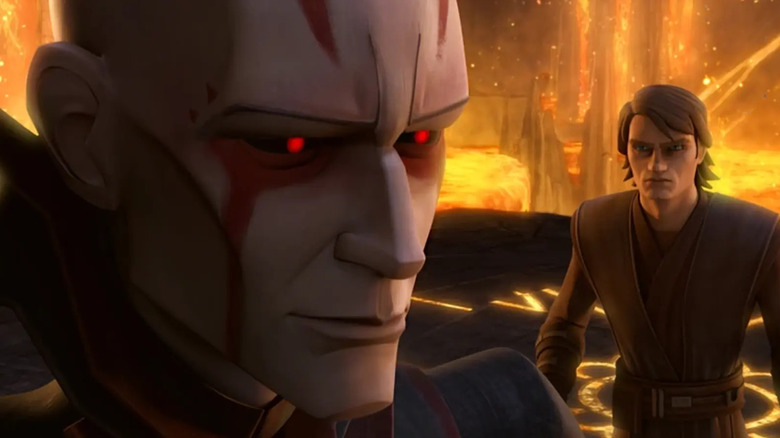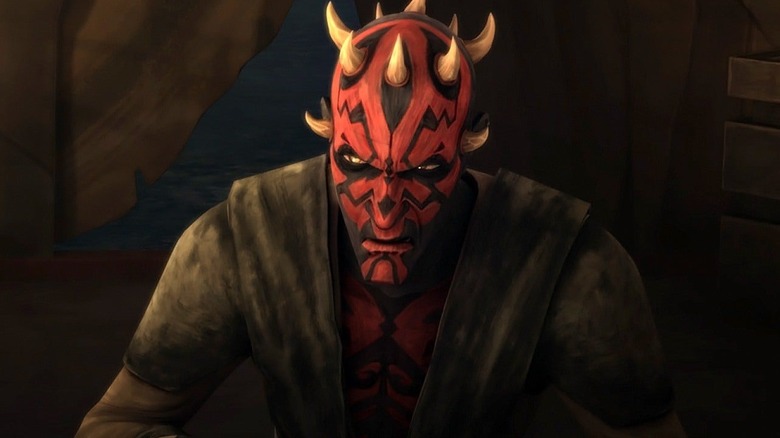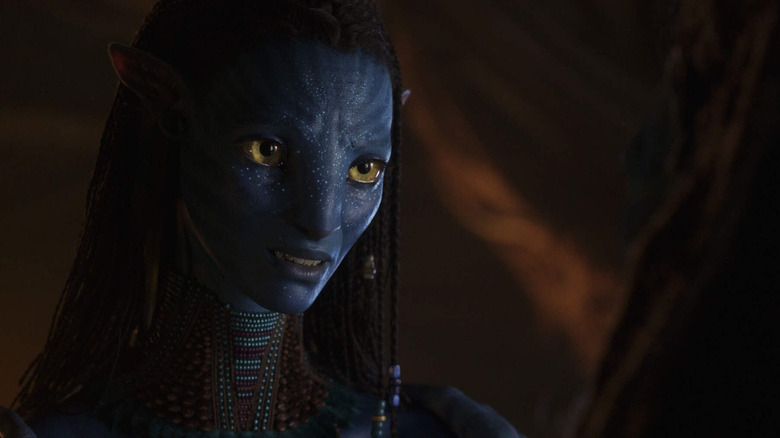A Star Wars Actor Is Calling Out A Major Issue With The Movie Industry
Sam Witwer's name will likely be familiar to "Star Wars" obsessives. Beginning in 2011, Witwer has been heavily involved in many "Star Wars" projects, playing The Son (as well a various others) in the animated series "Star Wars: The Clone Wars." He also turned up in "Star Wars Rebels," "Star Wars: Resistance," and provided vocals for various background characters in the feature film "Star Wars: The Force Awakens." His most notable role may be playing the voice of Darth Maul in both "Clone Wars" and "Solo: A Star Wars Story." He also had uncredited cameos in shows like "The Book of Boba Fett," "Andor," and "Ahsoka." He has voiced characters in many, many "Star Wars" video games, and even narrated "Star Wars" audio novels.
Witwer, like so many professionals, was bitten by the acting bug in high school, performing in various school productions, before being accepted into Juilliard for college. He didn't graduate, but continued to pursue acting as a profession, leading to commercial work and jobs as background characters on hit TV shows like "ER" and as recurring figures on shows like "Dexter" and "Battlestar Galactica." His first movie was playing an unnamed henchman in the kooky actioner "Crank." His credits are plentiful besides.
On X/Twitter, Witwer recently called out a problem he has encountered with working on high-profile, effects-heavy projects like "Star Wars." Many of the roles he plays, he noted, aren't just voice roles, but involve physical motion-capture technology, mapping his movements directly onto animated characters. Despite all the physical labor involved in such a performance, though, Witwer is still generally credited as "(Voice)." He made this comment in reaction to a proposed documentary on the motion-capture tech that went into making "Avatar." Motion-capture, he feels, is more than just (Voice).
Motion-capture performances are still generally credited as (Voice)
To quote him directly, Witwer wrote:
"It irritates me when I see, on IMDb, a role I shot and performed with other talented actors on a stage with [performance capture] listed as "voice."
The Variety article he was responding to spoke to actress Zoe Saldaña, who has famously played the character of Neytiri in James Cameron's ultra-blockbuster "Avatar" films, a role that was realized through motion-capture exclusively. Because motion-capture actors are represented by digital, well, avatars, they don't technically appear on screen. This seems to confuse credit-writers over at the Internet Movie Database, who can only credit non-visible performances as (Voice). Witwer and Saldaña both feel that motion-capture involves a lot of an actor's acumen. Indeed, Saldaña felt that a whole documentary about "Avatar's" mo-cap techniques should be produced, as it would "finally give us a chance to explain, in a meticulous way, why performance capture is the most empowering form of acting."
Motion-capture is an incredibly involved form of acting. Actors have to don special suits and act with small cameras mounted on their heads, pointing directly at their faces. The facial camera films a series of dots that are painted on their cheeks, eyes, and lips, which will be used to guide the animation for their digital counterparts. It's a technique that has been used for over 20 years in Hollywood. It requires an actor to give as much physicality to their role as any on-screen performance. Their on-screen characters may be animated, but the performance is theirs.
As Saldaña put it: "It gives us the credit, the ability to own 100 percent of our performance on screen."
Zoe Saldaña also feels that motion capture actors need more credit
Weirdly, Zoe Saldaña has never had the same crediting issue as Sam Witwer. Indeed, the many motion-capture actors in the two "Avatar" movies to date have all been fully credited on IMDb, and not merely been relegated to (Voice). This could just be a matter of technology and design. Witwer's animated avatars aren't as sophisticated as the "Avatar" avatars, you see. Witwer's characters tend to look more stylized and cartoonish, while the "Avatar" characters look photorealistic. With that photorealism in place, it's easier to see the actor underneath.
Despite this, motion-capture performances are still seen as, at the very most, a technological hybrid of SFX and acting. Which is true, of course. Audiences wouldn't be able to appreciate an actor's great performance if it weren't so well-translated by the animation technology surrounding them. This marriage of tech and performance has led to a dead zone at the Academy, which has staunchly refused to recognize actors for their mo-cap performances, no matter how great. Andy Serkis, for instance, gave an excellent performance in "Dawn of the Planet of the Apes," but went unrecognized by awards bodies because he was playing an animated ape. To that point, Saldaña commented in an article in the Independent:
"Old habits die hard, and when you have old establishments, it's really hard to bring forward change. And I understand that, so I'm not bitter about it, but it is quite deflating when you give 120 percent of yourself into something. I mean, not winning is OK, not being nominated is OK, but when you're overlooked and then minimized and completely disregarded."
Time will tell if a mo-cap performance ever wins any major awards.


